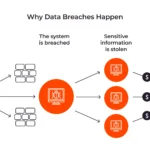As the saying goes, the only constants in life are death and taxes. We’d venture to add that another one of life’s constants are that taxes—and the laws that govern them—are always changing.
This is evident in recent changes to the way companies handle their research and development (R&D) costs. Rather than immediately writing off R&D costs, companies are now required to adopt a practice called R&D capitalization to view these costs as an asset instead of an expense.
Below, we talk through why R&D capitalization is required, how it works, and what you can do to help mitigate the effects.
Key takeaways:
- The 2017 Tax Cuts and Jobs Act (TCJA) resulted in changes to the treatment of research or experimental (R&E) expenditures under Section 174.
- For tax years beginning after December 31, 2021, companies are required to capitalize and amortize their R&D costs.
- These costs must be amortized over a period of five years if incurred within the U.S., and 15 years if incurred outside the U.S.
Table of contents:
- What is R&D capitalization?
- How does R&D capitalization work?
- How to mitigate the effects of R&D capitalization
- How to benefit from the R&D tax credit
- What R&D costs can be capitalized?
- How Pluralsight Flow can help you streamline R&D cost reporting
What is R&D capitalization?

Why is this relevant? Prior to 2022, companies could deduct full R&D costs—also known as research and expenditure (R&E) costs in the tax code—on their tax return. The 2017 Tax Cuts and Jobs Act put a stop to this practice.
As of January 1, 2022, companies are required to capitalize and amortize the cost of research and development—including software development cost.
So rather than immediately deducting R&D costs in the same fiscal year, you have to spread those costs out across five or 15 years—five years for R&D expenditures incurred within the U.S. and 15 years for R&D expenditures incurred abroad.
It’s worth noting that there’s no change to the generally accepted accounting principles (GAAP). R&D will continue to be expensed in companies’ financial reporting statements.
How does R&D capitalization work?
To better understand how R&D capitalization works, let’s walk through an example.
Let’s say a company has $1 million in revenue. In creating a new product, they incur $1.5 million in R&D expenditures. Prior to the 2017 TCJA, their R&D costs would have resulted in a $500,000 tax loss and no tax would have been paid.
For tax years beginning after December 31, 2021, that $1.5 million of R&D expenditures must be capitalized and amortized over five years (assuming expenses were incurred within the U.S.). This results in a $300,000 tax deduction against $1 million of tax revenue that would result in $700,000 in taxable income for the year. At a federal tax rate of 21%, that’s almost a $150,000 tax liability for the year.
In summary, this company brought in $1 million in revenue and expended $1.5 million. They lost money. And now in addition to that, they also owe almost $150,000 of tax liability due in April of the next year.
As you can see, the changes to R&D cost capitalization results in a phantom income increase. Amortization may cause companies in a loss situation to become taxable. Companies with large investments in R&D and no taxable income may struggle to come up with funds to cover the income tax resulting from the TCJA change.
Federal tax law is an ever-changing beast. For more information on how capitalizing development costs will impact your business, we recommend consulting with a seasoned tax expert.
How to mitigate the effects of R&D capitalization
Luckily, it’s not all doom and gloom. There is a way to help offset some of the effects of the TCJA changes. Cue: the R&D tax credit.
The R&D tax credit is not impacted by the capitalization changes that took place in January 2022. R&D capitalization and the R&D tax credit are governed by two completely different code sections within the IRS.
For a bit of background, the federal R&D tax credit was created by Congress in the 1980s. The intent behind the credit was to incentivize and reward companies for keeping their R&D efforts here in the U.S.
If you’re a traditional federal income taxpayer, the R&D tax credit will offset your federal income tax dollar for dollar. If you’re a qualified small business—aka startups that have not yet exceeded $5 million in revenue—you can use those R&D credits to offset your payroll taxes.
In addition to this federal R&D credit, there are also state-level R&D credits to explore. There are about 30-35 states (it changes every year based on state budgets) that offer their own R&D credit.
How to benefit from the R&D tax credit
As is the case with most everything tax-related, receiving the R&D credit requires some legwork. The IRS requires companies that claim an R&D credit to include specific and detailed information about their eligibility for the credit.
At a minimum, companies must identify all business components related to the R&D credit for that year. These activities are known as qualified research expenditures, or QREs. For each specific business component, companies must:
- Identify all R&D activities performed
- Identify the name, title, or position of the person who performed each R&D activity
- Identify all the information each individual sought to discover through R&D activities

To help ensure activities are QREs, companies can run them through the R&D four-part test. From a high level, this test ensures the activities were technological in nature and intended to create a new or improved business component. In developing that new business component, companies had to encounter technical uncertainties and a process of experimentation. If it meets all four requirements, that associated activity qualifies for the credit.

What R&D costs can be capitalized?
R&D costs are broadly defined under Section 174 of the tax code as “all costs incident to the development or improvement of a product, process, technique, pilot model, formula, invention, patent, or similar property.”
Examples include:
- Costs of obtaining a patent
- Software development costs
- Materials
- Depreciation
- Wages
- Overhead
R&D expenditure includes costs incidental to the development or improvement of a product regardless of whether costs result in a product meant to be used internally or sold.
Expenses not considered under Section 174 include:
- Acquiring an existing patent, model, production, or process
- Acquiring or improving land or depreciable property
- Acquiring depletable property
- Oil or gas exploration
- Testing or quality control
- Consumer or efficiency survey
- Management study
- Advertising or promotion
- Research for literary, historical, or similar project

How Pluralsight Flow can help you streamline R&D cost reporting
Documenting exactly where your R&D costs are going is no simple feat. Pluralsight Flow’s Investment Profile feature is designed to help companies capitalize their R&D expenses. The tool helps organizations visualize where resources and time are going.


